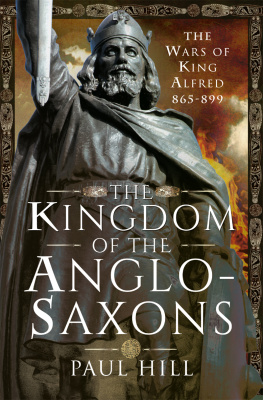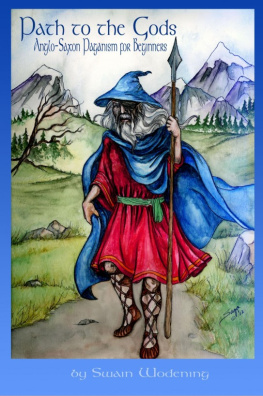Armies of Anglo-Saxon
England 4101066
Armies of Anglo-Saxon
England 4101066
History, Organization and Equipment
Gabriele Esposito
First published in Great Britain in 2022 by
Pen & Sword Military
An imprint of
Pen & Sword Books Limited
Yorkshire Philadelphia
Copyright Gabriele Esposito 2022
ISBN 978 1 39909 397 2
ePUB ISBN 978 1 39909 398 9
Mobi ISBN 978 1 39909 398 9
The right of Gabriele Esposito to be identified as Author of this Work has been asserted by him in accordance with the Copyright, Designs and Patents Act 1988.
A CIP catalogue record for this book is available from the British Library
All rights reserved. No part of this book may be reproduced or transmitted in any form or by any means, electronic or mechanical including photocopying, recording or by any information storage and retrieval system, without permission from the Publisher in writing.
Pen & Sword Books Limited incorporates the imprints of Atlas, Archaeology, Aviation, Discovery, Family History, Fiction, History, Maritime, Military, Military Classics, Politics, Select, Transport, True Crime, Air World, Frontline Publishing, Leo Cooper, Remember When, Seaforth Publishing, The Praetorian Press, Wharncliffe Local History, Wharncliffe Transport, Wharncliffe True Crime, White Owl and After the Battle.
For a complete list of Pen & Sword titles please contact
PEN & SWORD BOOKS LIMITED
47 Church Street, Barnsley, South Yorkshire, S70 2AS, England
E-mail: enquiries@pen-and-sword.co.uk
Website: www.pen-and-sword.co.uk
or
PEN AND SWORD BOOKS
1950 Lawrence Rd, Havertown, PA 19083, USA
E-mail: Uspen-and-sword@casematepublishers.com
Website: www.penandswordbooks.com
Contents
Gabriele Esposito is a military historian who works as a freelance author and researcher for some of the most important publishing houses in the military history sector. In particular, he is an expert specializing in uniformology: his interests and expertise range from the ancient civilizations to modern post-colonial conflicts. During recent years, he has conducted and published several researches on the military history of the Latin American countries, with special attention on the War of the Triple Alliance and the War of the Pacific. He is among the leading experts on the military history of the Italian Wars of Unification and the Spanish Carlist Wars. His books and essays are published on a regular basis by Osprey Publishing, Winged Hussar Publishing and Libreria Editrice Goriziana; he is also the author of numerous military history articles appearing in specialized magazines like Ancient Warfare Magazine, Medieval Warfare Magazine, The Armourer, History of War, Guerres et Histoire, Focus Storia and Focus Storia Wars.
Acknowledgements
This book is dedicated to my magnificent parents, Maria Rosaria and Benedetto, for the immense love and fundamental support that they always give me. It is thanks to their precious advice deriving from long experience that the present book became the product that it is. A very special thanks goes to Philip Sidnell, the commissioning editor of my books for Pen & Sword: his love of history and his passion for publishing are the key factors behind the success of our publications. Many thanks also to the production manager of this title, Matt Jones, for his excellent work and great enthusiasm, while a special thanks is due to Tony Walton for editing my original manuscript in such a skilled and knowledgeable way. A very special mention goes to the brilliant re-enactment groups that collaborated with their photos to the creation of this book: without the incredible work of research of their members, the final result of this publication would have not been the same. As a result, I want to express my deep gratitude to the following living history associations: Acle Early Medieval Re-enactment Group (especially Liam Norman and Stuart Findlay), Reenactment Mercenaries (especially Danny Archer), Swehanaz (especially Dave Huggins) and Wulfheodenas (especially Lindsay Kerr and Paul Mortimer).

Germanic warrior of the sixth century. (Photo and copyright by Lindsay Kerr of Wulfheodenas)
Introduction
The main aim of this book is to present a detailed overview of the military history of Anglo-Saxon England. It was a time of incredibly important events which shaped the destiny of the British Isles. The text will follow the Germanic communities of the Saxons, Angles and Jutes from their early settlement in Sub-Roman Britain to the Battle of Hastings, which marked the ascendancy of the Normans in England. The Anglo-Saxons, like all the Germanic groups that migrated across Europe during Late Antiquity, were extremely warlike: they were able to conquer England in a relatively short time and establish their own realms in the British Isles. These were collectively known as the Heptarchy and flourished for several decades until the arrival of the Vikings led to several of them being destroyed. The Scandinavian invasions of England were a turning point in the history of the Anglo-Saxons, since they obliged the Germanic peoples of Britain to put aside the political differences dividing them in order to fight off the incursions. The Anglo-Saxons fought against the Vikings for more than two centuries, and on several occasions their world was on the verge of collapsing under strong pressure from the invaders. In the end, however, the emerging figure of Alfred the Great (ruler of Wessex) was able to unify much of Anglo-Saxon England and obtain a series of victories over the Scandinavians that in the long run preserved the independence of the Saxon lands. The tenth century saw the consolidation of the Saxon kingdom as one of Europes most important nations, especially under the guidance of monarchs such as Aethelsthan and Aethelred II. After a brief Viking interlude with the reign of Cnut the Great, Edward the Confessor was the last of the Saxon kings to rule over a unified realm. His death in 1066 caused a terrible dynastic crisis that led to two simultaneous invasions of England. Harold Godwinson, the greatest Saxon warlord of this era, secured the English crown for himself and was able to defeat the last Viking invasion of England (guided by Harald Hardrada). King Harold was, however, later defeated during that fatal year of 1066 by William the Conquerors Normans. The final chapters of the book are devoted to an analysis of the Anglo-Saxon military organization and weaponry, describing in great detail the various troop types that made up the Anglo-Saxon forces (from ordinary fyrdmen to elite housecarls) and the various elements that comprised the panoply of the Anglo-Saxon warriors (understanding how these shaped the tactics employed by the Germanic fighters).

Spangenhelm helmet. (Reconstruction by Swehanaz, photo and copyright by Lindsay Kerr of Wulfheodenas)




















